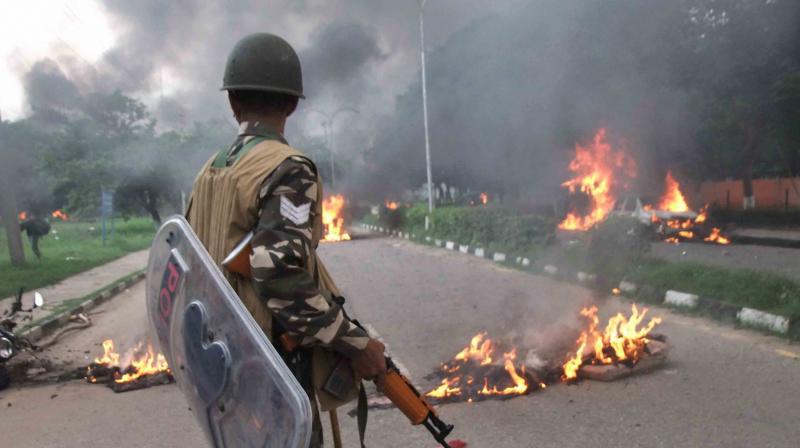“You let Panchkula burn for political benefits,” Says High Court
 CHANDIGRAH : Punjab and Haryana High Court on Saturday slammed the Haryana government for the widespread violence and arson which took place in the state in which over 30 people were killed in the wake of conviction of Dera chief in a rape case.
CHANDIGRAH : Punjab and Haryana High Court on Saturday slammed the Haryana government for the widespread violence and arson which took place in the state in which over 30 people were killed in the wake of conviction of Dera chief in a rape case.
The HC also accused the Manohar Lal Khattar government of misleading them and said that there was a sea of difference between administrative and political decisions. At the same time, the court asked the state government for details of Gurmeet Ram Rahim Singh’s movable and immovable properties in Punjab and Haryana till next hearing on August 29.
Yesterday too, the HC had ruled that the damages would be be recovered from Dera Sacha Sauda if followers of Ram Rahim were found involved in causing loss to public and private properties. The bench comprising Acting Chief Justice SS Saron, justices Surya Kant and Avneesh Jhingan had taken a serious view of the situation that had emerged.
“Whosoever has been instigating and inciting the crowd that has gathered to commit the acts of arson and violence they would be sternly dealt with. The damages that are caused to public and private properties shall be recovered from them,” the bench had observed.
CBI judge Jagdeep Singh had yesterday held Ram Rahim, 50, guilty of rape in a case that was registered on the basis of an anonymous written complaint in 2002 that he had sexually exploited two female followers.On the basis of the report, a case was registered against him in December 2002 by the CBI on the directions of the Punjab and Haryana High Court.
The quantum of sentence against Ram Rahim will be pronounced on August 28, CBI counsel HPS Verma told reporters outside the court. The punishment can be a jail term not less than seven years but may even extend to life imprisonment.As the news spread, Dera chief’s followers unleashed violence and set afire a large number of vehicles, buildings and railway stations in Panchkula, as well as in Sirsa, where the Dera is based, and in Punjab. Media persons and assets were among the main targets of the mobs.

